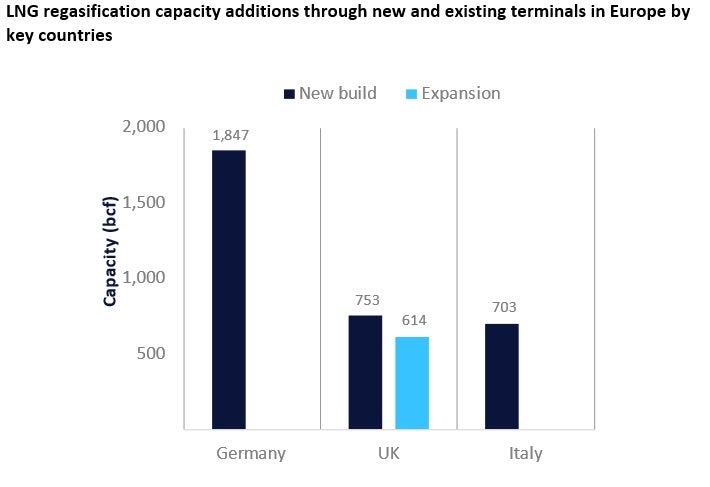Europe is poised to add significant liquefied natural gas (LNG) regasification capacity additions, accounting for over 20% of the global regasification capacity additions by 2030. This growth is propelled by an array of reasons such as to reduce dependence on Russian piped natural gas, bolster energy security, support the transition to a lower-carbon economy, and meet the rising demand for natural gas.
Germany is set to take the lead in LNG regasification capacity additions in Europe by 2030, accounting for more than 25% of the total capacity additions in the region by 2030. This strategic move underscores the nation’s commitment to stop its heavy reliance on Russian natural gas, enhancing its energy infrastructure and securing a more diversified gas supply. Key upcoming regasification terminals such as Wilhelmshaven, Stade, and Brunsbuttel are expected to be instrumental in driving the regasification capacity additions by 2030.
The Wilhelmshaven terminal is at the forefront of the German regasification capacity additions with 529.5 billion cubic feet (bcf) of capacity likely to be added during the outlook period. Tree Energy Solutions is the proposed operator and 100% equity holder in the terminal, which is currently in the approval stage and is likely to begin operations in 2028.

The UK is also expected to add considerable regasification capacity additions in Europe, with nearly 1,367bcf of capacity expected to be added by 2030. Isle of Grain, an active terminal being operated by National Grid Grain LNG, is poised to lead the capacity additions during the outlook period. The terminal’s capacity is being expanded from 688.4bcf in 2024 to 1,070bcf this year. The expansion enables the terminal to meet about 33% of the UK’s gas demand and enhances energy security.
Further details of global LNG regasification capacity and capital expenditure analysis can be found in leading data and analytics company GlobalData’s new report, LNG Regasification Industry by Capacity and Capital Expenditure with Details of All Operating and Upcoming Terminals to 2030.




